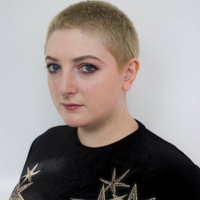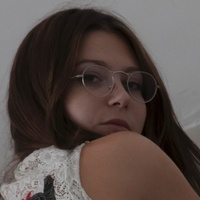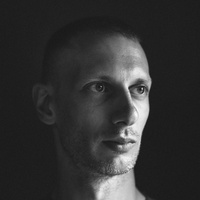As told to T. Cole Rachel, 2214 words.
Tags: Film, Process, Beginnings, Production, Adversity, First attempts.
On the value of thinking on your feet
Filmmaker Carlen May-Mann discusses the fly-by-the-seat-of-your-pants nature of low-budget filmmaking, the subversive allure of working in genre films, and why finding your creative family is important.You used Kickstarter to fund The Rat. What made you decide to do it that way?
Since it’s a short film, it felt manageable to do it that way. We weren’t really in the business of applying for grants or trying to get financing. I’m lucky to be in a wonderful community in New York of filmmakers and artists where everybody wants to support each other. I figured that if everyone I knew donated a dollar, it would be a good start. We just dove into it with the expectation that it had to work. We were in pre-production while we were still Kickstarting. My motto was, “It’s gonna work, because it has to.” And it did. We were just kind of depending on the kindness of strangers and thankfully it worked out well.
Working on a tight budget and being in New York City, where did you shoot?
We shot all over New York City, which was challenging because we needed it to look like a suburb, but we couldn’t afford to drag a crew to the suburbs. So we spent a lot of time scouting locations that looked like they weren’t in the city. We ended up shooting deep in Staten Island at Chrysler Mansion, which is the haunted house in the film and also felt like an actual haunted house. We also shot in a ritzy neighborhood in the Bronx—at this beautiful private school—and in Harlem. We were just kind of cheating the hell out of it, so it didn’t look like New York City, which is funny since you always hear about other filmmakers cheating things to try and make them look like New York City.
How did you find all of your collaborators?
My producer, Beth Kitts, is my long-term collaborator. We went to school together and were friends at school and have been working together ever since. I also went to school with my two other producers as well as my costume designer. So it was basically a bunch of people I went to school with, and then people I’ve worked with along the way. We also sourced recommendations from people in our network. It was my first time working with our cinematographer and our production designer. When they tell you in school that the people around you will end up being your collaborators, it’s really true. In the end, it was a motley crew from all around.
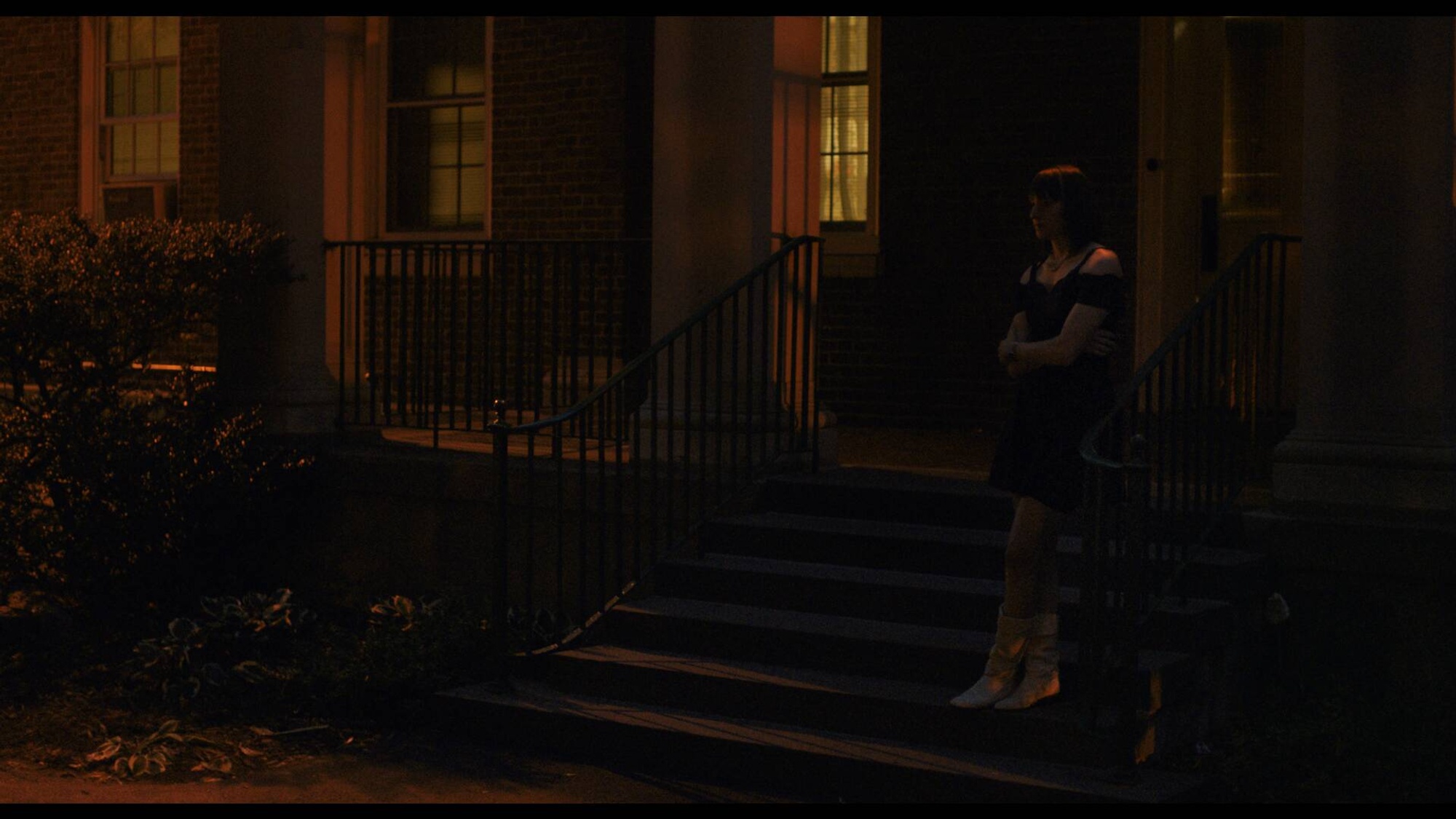
How long was the shoot?
Just three days! Three long, long days. We hit 12 hours everyday. We did an overnight in the haunted house, and then everything else over the other two days.
The Rat has been described as a horror film. Were you interested in making a genre film?
Yeah. I want it to be thought of as horror, first and foremost. I hope it scares people. I’ve received some good reactions so far. I wanted to use the genre in a big, allegorical way where it is definitely a horror film, but it is also using the genre to tell a dramatic story about a moment in a young woman’s life. It seems like people have been thinking about it like a horror film, but also taking away the larger message that I was trying to convey. It speaks to certain primal fears that a lot of young women face.
Horror movies are having such an interesting cultural moment right now. Were you always interested in making them?
I actually hated horror for a long time, but then I took a horror class during my junior year of college to fill out my schedule. It was at 9:30 AM, and I just loved it. I fell in love with horror. It really clicked for me. A lot of what we focused on in that class is how the horror film has really historically been used in American cinema to tell subversive stories and progressive stories in a way that was able to get around legal and cultural censorship. It’s so appealing to me as someone who really wants to talk about social issues in my filmmaking, but also just wants to make fun and enjoyable films.
So I have been developing a horror feature for the past few years, but I didn’t set out being like, “I’m gonna be a horror filmmaker.” I think my sensibility just falls into it really easily, and I just love genre films. I feel committed to elevating that genre vibe, which is what we’re kind of experiencing right now in the culture. I’m working on a sci-fi script as well. I think there’s so much to be done with the combination of genre film and art film.
You mention that you’ve been working on a feature film as well, how did that fit into the equation with also getting a short film made?
Basically, I’ve been working on this feature for a while, trying to get financing. A lot of people who I’m working with have strongly recommended making a proof-of-concept film. You usually see those first as a short, which then later gets expanded into a feature. Or you have a feature concept and you take a scene from that and you shoot it as a proof of concept. That just didn’t appeal to me. I got excited about the idea of making a short when I thought about it as more of a companion piece than a proof of concept. I wanted to make something that would hit on the genre and the tones and themes of this feature I’m developing.
So I was like, “Okay, I’m making a horror short.” I tend to work from an image I like, and then I build a story around that image. For The Rat there were two images in my mind, though one of them ended up getting cut from the film. The first was a woman waiting outside her dorm for her boyfriend, who is super late. That ended up getting cut down. The other image was a couple having sex in a haunted house, which felt so iconically horror to me. There are so many complicated connotations around sex and sexuality in horror films. I was drawn to those images and how bizarre it is when you see sex on screen in a horror film and you’re immediately like, “They’re gonna die now.”
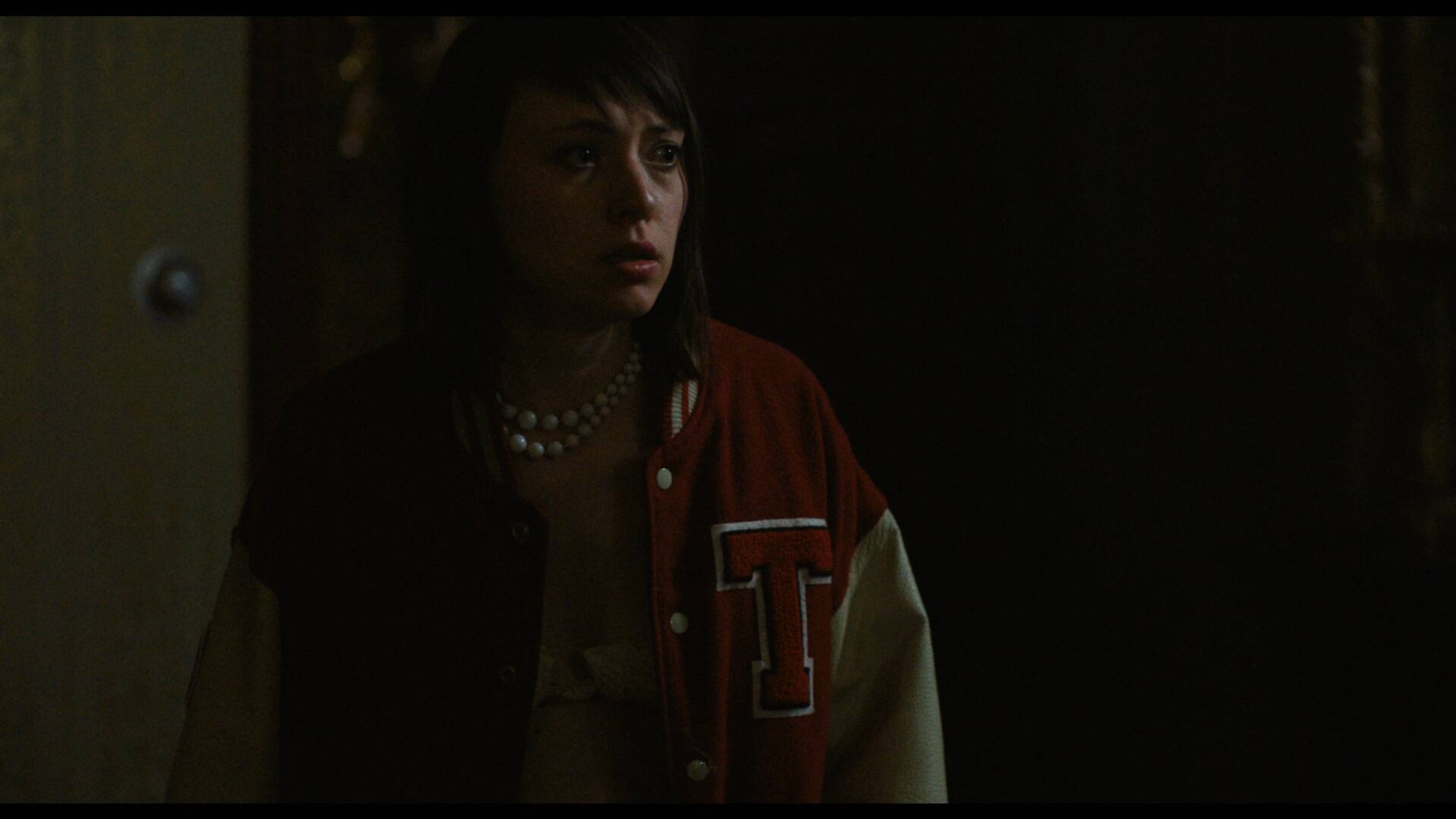
So I wanted to take that idea and twist it into something different. Once I landed on the haunted house thing, it really helped. There is so much strong iconography associated with the haunted house film, so much to draw from and so many fun visual things you can do with it. When I landed on that idea, everything else just kind of fell into place from there.
Was it important to have certain visual touchstones or specific references in mind when you started to plot out shooting your film?
Yeah. So there is a specific scene in the Val Lutin film, The Seventh Victim—which we were assigned to write a paper on in that horror class I was talking about—that really stuck with me. There’s this woman creeping down a hallway, walking in and out of shadow, and it’s just this beautiful, tense scene. I thought about that a lot, the woman creeping through the house looking for something, expecting something, and not being sure what she’s gonna find.
I was also attracted in general to the way that black-and-white horror films are lit, especially low-budget, black-and-white horror—really stark shadows. Obviously, we didn’t shoot in black and white, those dark shadows and those patches of darkness were appealing to me. The rest of the film I wanted to take into more of a teen movie kind of place. That’s kind of my other passion besides horror—teen films.
I was excited about making a party scene. That’s always something I wanted to do. It ended up being the most fun part of the shoot. It also allowed me to indulge my love for movies like She’s All That and 10 Things I Hate About You. It gives you an excuse to just fill up the frame with so much energy and movement. Obviously my film has a much darker vibe, but I really did want to create a scene with all of this vibrancy and insert it into my horror film.
Every creative project presents its own challenges that you just have to solve on the fly, but in the process of making your film, what were the biggest surprises? What were things that were maybe surprisingly difficult that you didn’t expect?
A couple come to mind. A thing we worked really hard on in pre-production was finding the perfect car for the male lead to drive. The film’s set loosely in the ’80s. I wanted an older car, a kind of clunker, but an attractive clunker. We found this gorgeous mint green 1967 Chevy pickup truck. An incredible car, and we got it for a great price from this really nice guy. I think he was a car collector. We’re like, “All right. Perfect.” One day my producer texts everyone and says, “So our car is a stick shift, right? Can our actor drive a stick shift?” The answer was no, he couldn’t. So he had to learn, on the fly, while on set, as we were about to shoot. I couldn’t believe he was down for that. He did a great job. I think in his words, he “only stalled it once,” so he killed it. That was a crazy thing we had to contend with. I was just lucky that the actor was such a trooper.
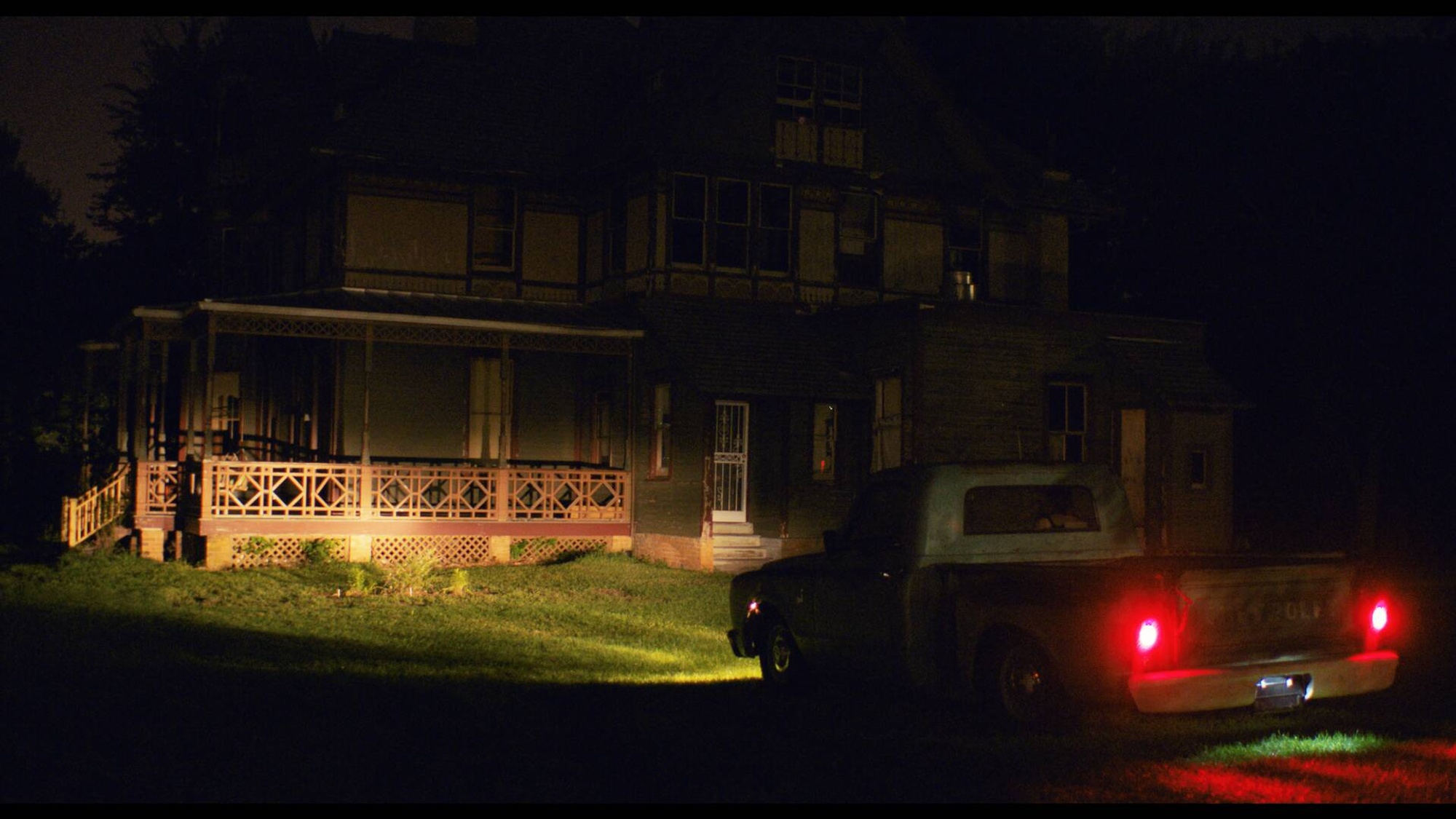
On the second day of shooting, I almost lost it. We showed up at our location to shoot a small little scene where the lead character wakes up in her bedroom. We had been told that we had a room to shoot in. We were shooting at a frat house, and the room was on the sixth floor. It was tiny. When we got there our contact was like, “You can’t take stuff off the walls. Sorry. You can’t change anything.” We were like, “Oh, we can’t do it.”
Suddenly we didn’t have a bedroom, and I don’t know what we’re gonna do. I was freaking out. So, what we ended up doing was negotiating with someone who lived there to let us borrow their mattress. We set up a mattress on apple boxes and crates in the living room, and our production designer Lance basically just builds a fake bedroom in this corner with this makeshift bed. It turned out incredible. I loved how the set turned out. I love the scene. It was dicey though. You just have to think on your feet, not lose your head, and figure something out quickly.
Do you have any kind of advice for a first-time filmmaker? Things you wish you had known?
One thing that has been beneficial to me is just being very hard on myself in terms of timelines. Just being like, “You’re gonna do it by this time,” and then sticking to that, no matter what. For The Rat, our hard deadline was actually the Sundance Mission deadline, which was really helpful. It was just like, “Well, we’re gonna be done with this film by this time because we have to be.” It’s so easy to nitpick forever, to prep forever, to try to get things perfect forever, but you just have to be done at some point, and that’s something that was helpful to me in this project that I wish I’d been able to do on previous projects. I think it would’ve helped me in the past. Make a hard deadline. Stick to it.
Another thing that is so important is just finding your people. Find people whose vibes you like and who you enjoy being with on set, because it’s gonna be crazy and it’s gonna be stressful. But if you like your people, everything’s a lot easier. Just find your collaborators. I found that there are always people out there who will get excited about your ideas, and you’ll get excited about their ideas. That’s just the best feeling.
Carlen May-Mann Recommends:
I just have one big recommendation, the movie that I think everyone in the goddamn world should watch is Robert Altman’s 3 Women. That was the film I saw that made me want to make movies. I guess I wanted to make films before I saw it, but that’s the movie I saw where I was like, “If I can make something that’s even a little bit like this ever, I need to try.” It’s also a film I’ve drawn on a lot, because it’s a weird, surreal drama. But it’s freaky. It’s messed up. It’s really good at weaving uneasiness throughout everything that happens. That’s my big recommendation. That’s the movie I want everyone to see. It’s just an extraordinary thing.

